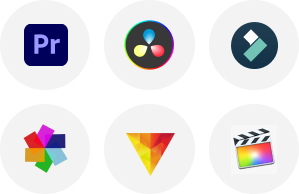A pitch deck is a critical tool for businesses, startups, and entrepreneurs who seek to secure investment, sales, or partnerships. TVS Cube’s pitch deck services offer a concise presentation that summarizes your financial projections, market potential, business ideas, and more. Creating compelling pitch decks can be the difference between securing funding and missing out.
In this article, we will guide you on how to craft an effective pitch deck that attracts and convinces your targeted audience.
Understand the Audience
It is crucial to understand your targeted audience before beginning to design pitch deck template. Tailor your pitch deck to address the specific circumstances and interests of your specific audience. Different audiences have different preferences:
Investors: Interested in the market opportunity, financial potential, and the ability of your team to execute.
Potential Clients: Focused on how your product or pitch deck services solve their issues and provide value.
Partners: Focused on strategic benefits, synergy, and mutual growth opportunities.
Structure the Pitch Deck
An effective pitch deck often includes these key sections:
Introduction
Company Name
Clearly state your company’s name and logo.
Tagline
A short, memorable tagline that encapsulates what you do.
Problem Statement
Identify the Problem
Clearly articulate the problem or pain point that your business addresses. Use real-world examples or data to illustrate why this problem is significant.
Emphasize Impact
Show how the problem affects your target audience, emphasizing the urgency or scale.
Solution
Present Your Solution
Describe your product or service and how it effectively solves the problem you’ve outlined.
Unique Selling Proposition (USP)
Highlight what makes your solution unique compared to existing alternatives.
Benefits
Explain the specific benefits and advantages your solution offers.
Market Opportunity
Market Size
Provide data on the size of the market and its growth potential. Use credible sources and present figures in a clear, compelling way.
Target Audience
Define your target market segments and explain why they are the right audience for your solution.
Market Trends
Highlight any relevant market trends or dynamics that support the need for your solution.
Product/Service Overview
Features and Functionality
Detail the main features and functionalities of your product or service.
Demo / Screenshots
Include visuals, screenshots, or a short demo video to give a tangible sense of what your product looks like and how it works.
Development Stage
Mention the current stage of development and any milestones achieved.
Business Model
Revenue Streams
Explain how your business makes money. Common models include subscription fees, one-time purchases, licensing, and advertising.
Pricing Strategy
Outline your pricing structure and how it aligns with market expectations.
Sales Channels
Describe how you plan to reach and sell to your customers.
Go-to-Market Approach
Marketing Plan
Describe your strategy for promoting and acquiring customers. This could include digital marketing, partnerships, events, and more.
Sales Strategy
Outline your approach to selling your product or service, including any sales teams or tactics you plan to employ.
Milestones
Set clear goals and timelines for your marketing and sales efforts.
Competitive Analysis
Competitors
Identify key competitors and provide a brief overview of their strengths and weaknesses.
Competitive Advantage
Explain what sets your business apart from the competition and how you plan to maintain this advantage.
Market Positioning
Show how you position your business in the market relative to competitors.
Financial Projections
Revenue Forecast
Provide projections for your revenue over the next 3-5 years.
Expenses
Outline your major expense categories and anticipated costs.
Profitability
Show projected profit margins and break-even analysis.
Funding Requirements
If seeking investment, specify how much funding you need and how it will be used.
Team
Key Members
Introduce the core members of your team and their relevant experience.
Roles and Responsibilities
Describe each team member’s role and how their expertise contributes to the business’s success.
Advisors
Mention any advisors or industry experts who are supporting your venture.
Vision and Roadmap
Long-Term Vision
Articulate your long-term goals and vision for the company.
Milestones
Outline key milestones and achievements you plan to hit in the future.
Strategic Plan
Describe the strategic initiatives you’ll undertake to reach your goals.
Call-to-Action
Summary
Briefly recap the key points of your pitch.
Call to Action
Clearly state what you’re asking for—whether it’s funding, a meeting, or a partnership.
Contact Information
Reiterate how the audience can get in touch with you.
Design Tips for Your Pitch Deck
Keep it Simple:
Use clear, concise text and avoid overcrowding slides with information.
Visuals Matter:
Incorporate high-quality visuals, graphics, and charts to make your points clearer and more engaging.
Consistency:
Maintain a consistent design throughout the deck, including colors, fonts, and layouts.
Engaging Content:
Use storytelling techniques to make your pitch compelling and memorable. Connect with your audience emotionally and logically.
Mistakes to Avoid
Overloading Information:
Avoid overwhelming your audience with too much detail. Focus on key points and keep it concise.
Lack of Focus:
Ensure each slide serves a purpose and contributes to your overall narrative.
Ignoring Design:
A poorly designed pitch deck can detract from your message. Invest time in creating a professional, visually appealing presentation.
Neglecting the Audience:
Tailor your pitch to address the specific needs and interests of your audience.
Skipping Financials:
If you’re seeking investment, ensure your financial projections are realistic and well-prepared.
Finalizing and Presenting Your Pitch Deck
Review and Revise:
Seek feedback from mentors, colleagues, or advisors and make necessary revisions.
Prepare for Q&A:
Be ready to answer questions and provide additional details about any aspect of your pitch.
Practice Your Delivery:
Rehearse your presentation multiple times to ensure confidence and fluency.
Conclusion
Crafting an effective and compelling pitch deck a science or an art. TVS Cube, a pitch deck design company, pitch deck services requires you to distill your business idea into an effective narrative while providing the essential details to support your claims. You will be well-positioned to make a robust impression and acquire your goals by following these guidelines and putting in the effort to craft a professional and dynamic pitch deck.
FAQs
1-What is the purpose of consulting pitch decks?
Consulting pitch decks are designed to effectively convey the significance and capabilities of a consulting firm to potential clients and investors.
2-What is the best artificial intelligence for pitch decks?
ProAI is one of the best AI slide deck generator options for crafting custom pitch decks based on your business objectives and target investors.
3-What is an automation pitch deck?
An automation pitch deck is a strategic presentation used by startups and companies to showcase their automation solutions to potential investors, clients, or partners
4-What is the pitch deck format?
A pitch deck is a type of presentation designed specifically to propose an idea, product, solution, or opportunity to potential clients, investors, or partners.
















